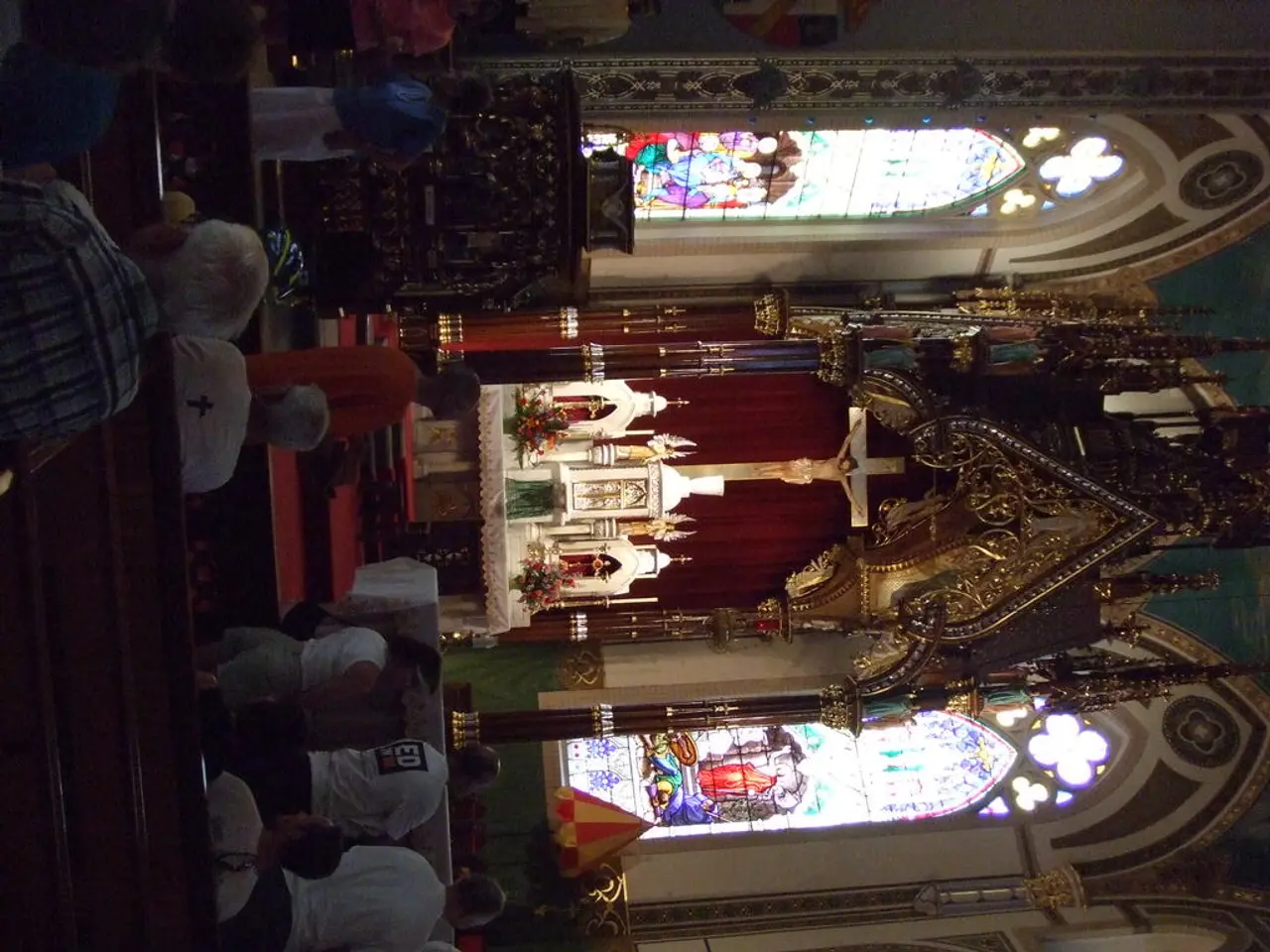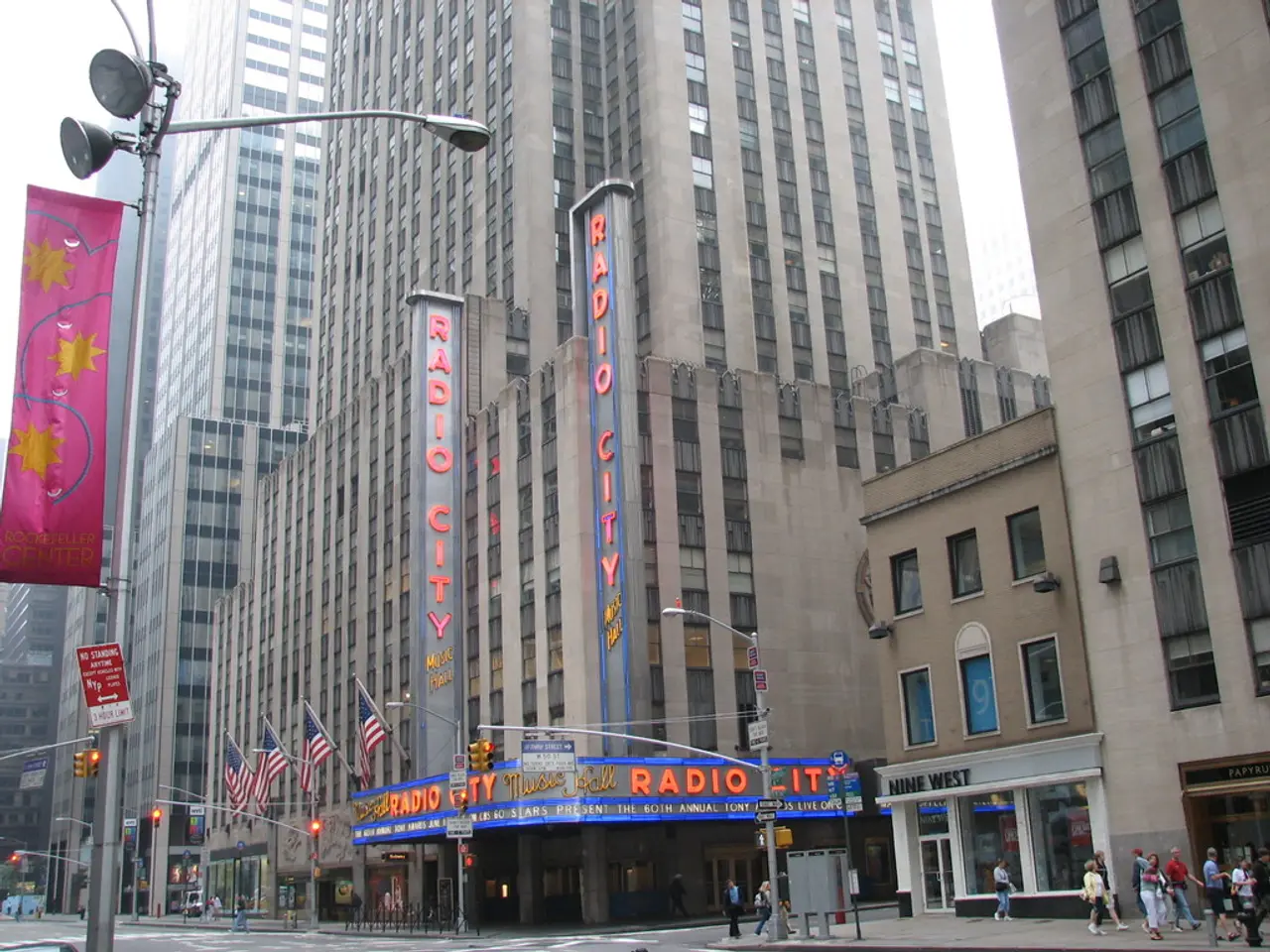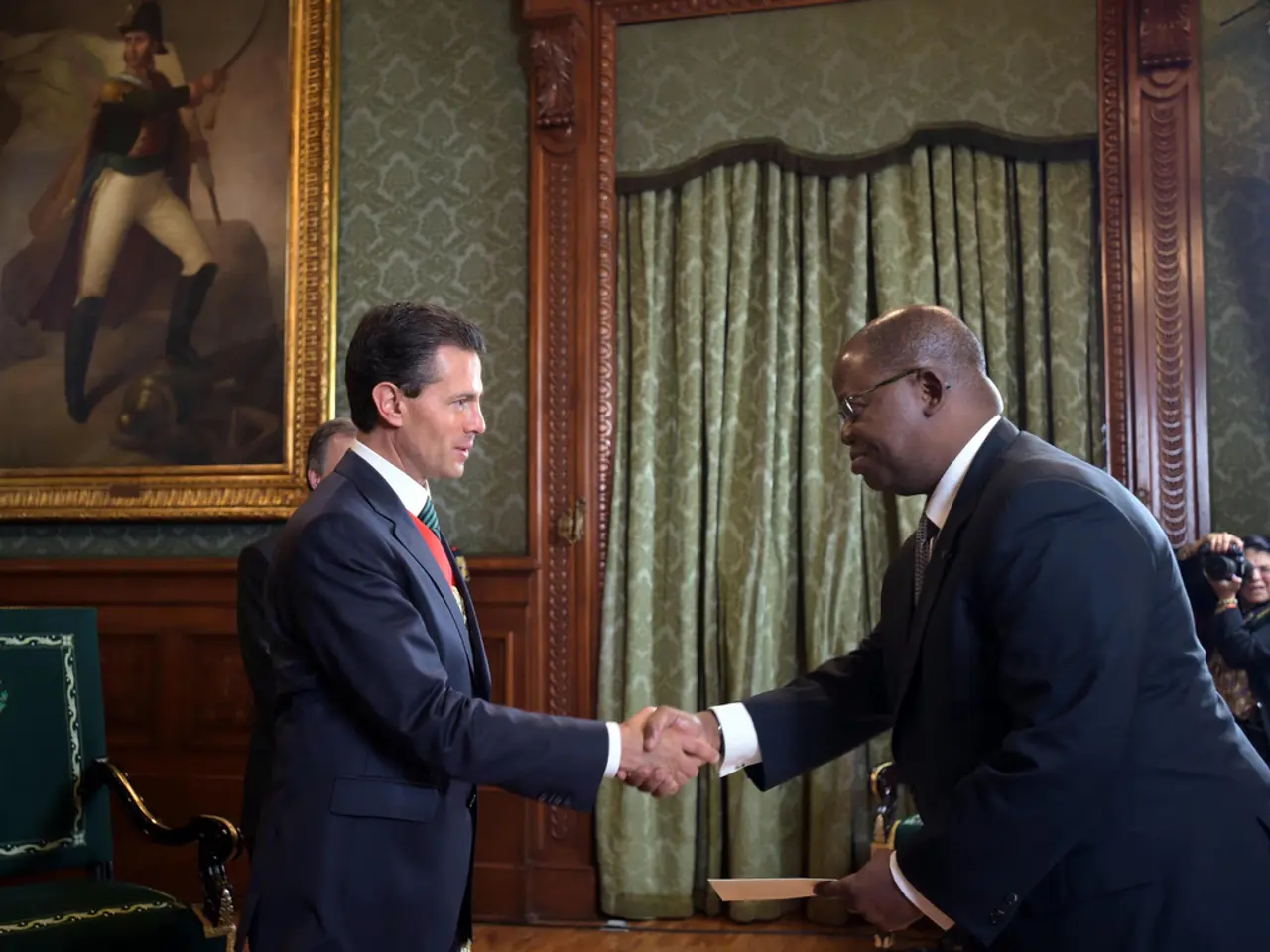Grisly Trial for the Deceased Pontiff: The Cadaver Synod Unveiled
In the late 9th century, a bizarre and macabre event unfolded in the heart of Rome, known as the Cadaver Synod. This trial, which took place in January of 897, would go down in history as one of the most extraordinary and questionable moments in Church history.
Pope Formosus, a respected figure known for his intellect and political skills, served as the Bishop of Porto before ascending to the papacy. However, his tenure was fraught with controversy, particularly his decision to invite Arnulf of Carinthia to invade Italy and depose Emperor Lambert of Spoleto.
After Formosus's death, his immediate successor, Pope Stephen VI, sought to assert his own legitimacy and the dominance of his political faction. In a grotesque spectacle, Formosus's corpse was exhumed, clothed in papal vestments, and seated on a throne inside the Lateran Basilica for a trial. The late Pope was accused posthumously of perjury, violating canon law, and illegally assuming the papal office, reflecting deep political conflicts and struggles for control over the papacy at that time.
The Cadaver Synod, as the trial came to be known, involved various aristocratic and clerical groups vying for power. The trial was as much about delegitimizing Formosus’ decisions and supporters as it was about enforcing ecclesiastical law, and it further illustrates the turbulent relationship between religious authority and political ambitions during this era.
The verdict of the trial found Pope Formosus guilty, and his papacy was declared invalid. All his acts as pope were retroactively nullified. The body of Formosus was stripped of its papal garments, three fingers of his right hand were cut off, and he was buried in a pauper's grave.
However, the story did not end there. Pope John IX convened a synod in 898 to annul the Cadaver Synod's decisions and declare the trial invalid. Formosus's body was recovered from the Tiber River and reburied in St. Peter's with honours, under the orders of Pope Theodore II.
The Cadaver Synod reflects a chaotic and factionalized period in the papacy often described as part of the “Dark Ages” of the Church. It serves as a warning that power unchecked becomes grotesque, that justice without principle becomes theater, and that the line between piety and cruelty is often thinner than we imagine. History, it turns out, has a strange sense of drama.
References:
[1] The Cadaver Synod: A Brief History. (n.d.). Retrieved from https://www.britannica.com/event/Cadaver-Synod
[4] The Cadaver Synod. (n.d.). Retrieved from https://www.historytoday.com/archive/cadaver-synod
[5] The Cadaver Synod: A Dark Chapter in the History of the Papacy. (n.d.). Retrieved from https://www.history.com/news/cadaver-synod-pope-formosus-church-history
- In the wake of the controversial Cadaver Synod, opinions regarding the legitimacy of Pope Formosus's papacy and the practices employed during the trial remained deeply divisive, sparking debates not only in the general-news but also within the realm of politics and church history.
- Throughout history, the Cadaver Synod, a macabre event occurring in the late 9th century in Rome, has been viewed as a significant moment that illuminates the intricate relationship between power, religion, and justice, especially in the context of the Church's tumultuous political history.
- The Cadaver Synod serves as a cautionary tale that highlights the dangers of unchecked power in politics, the potential for justice to be twisted into spectacle, and the precarious balance between piety and cruelty in the annals of crime-and-justice and Church history.








